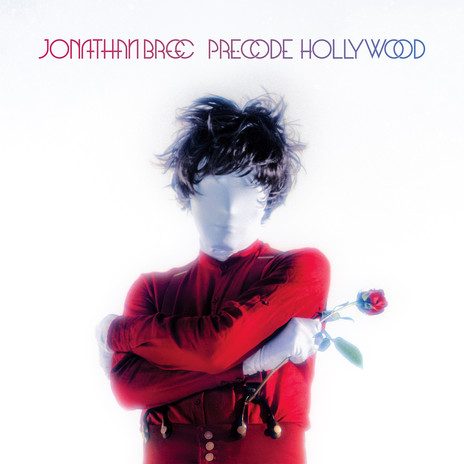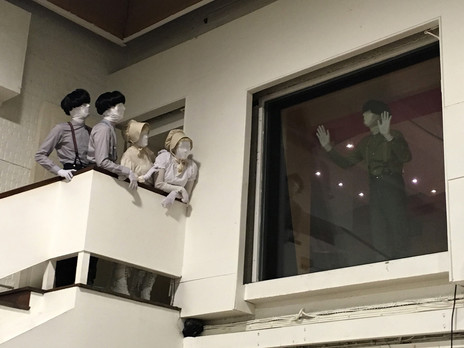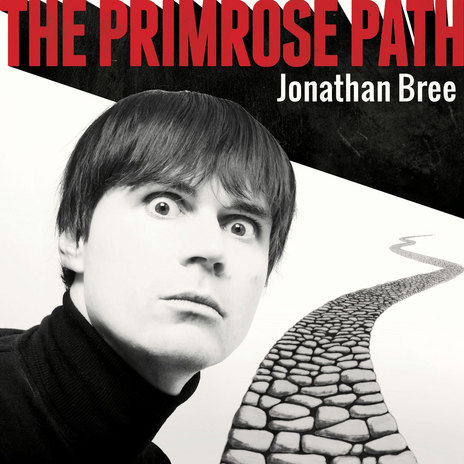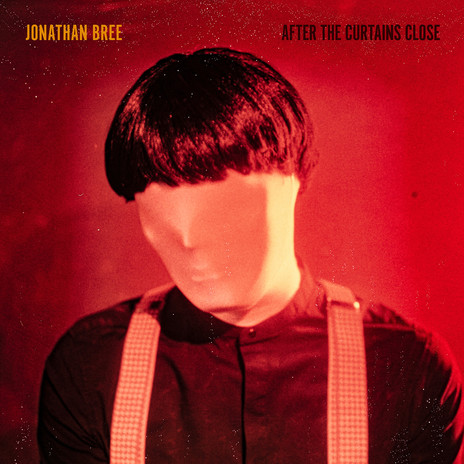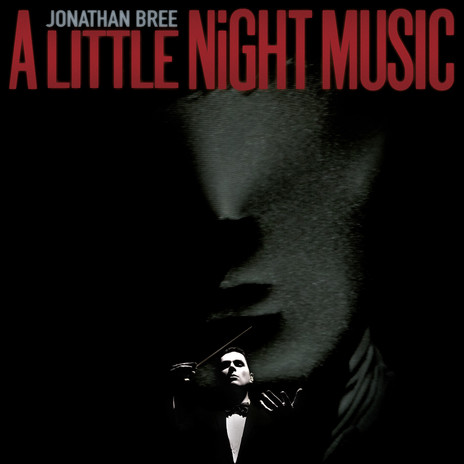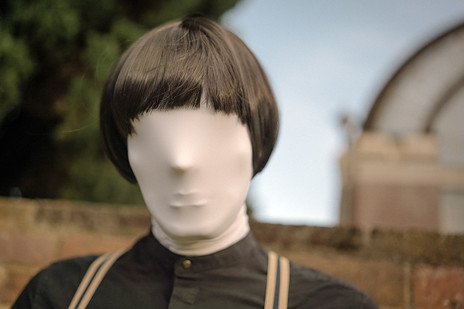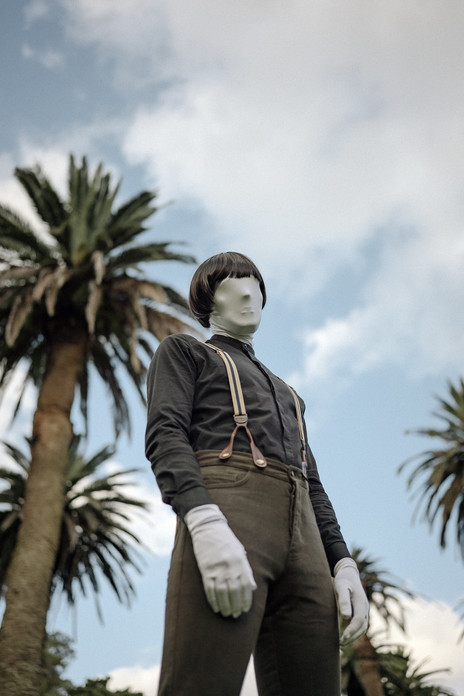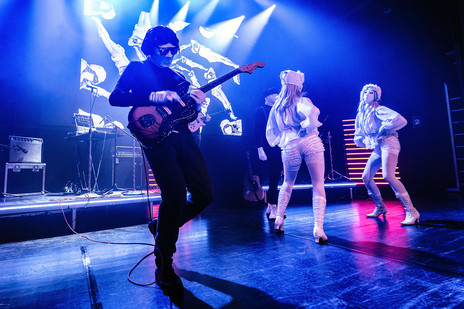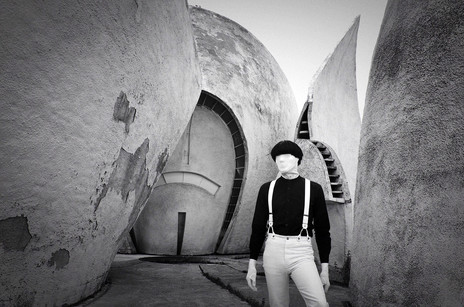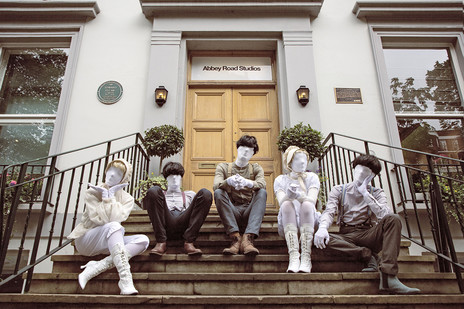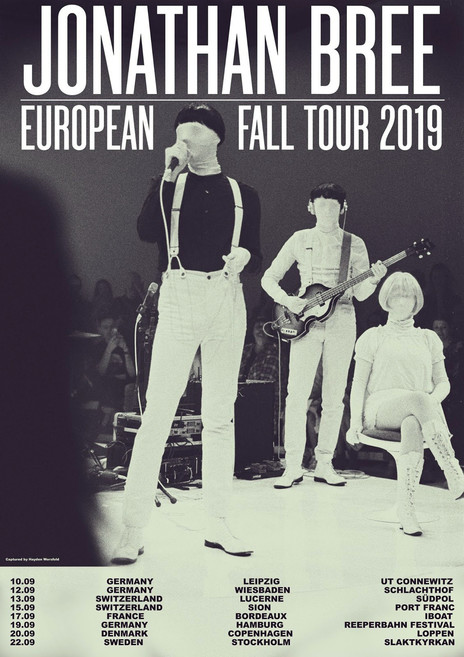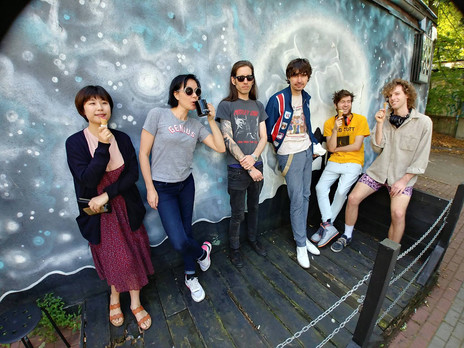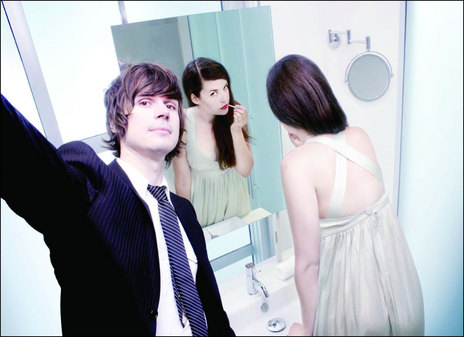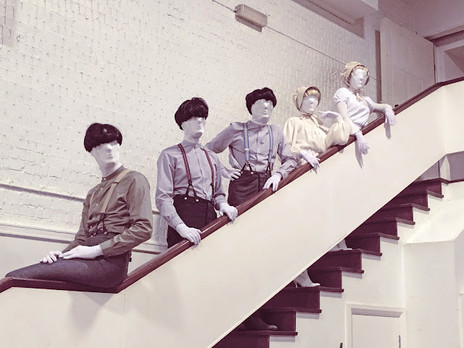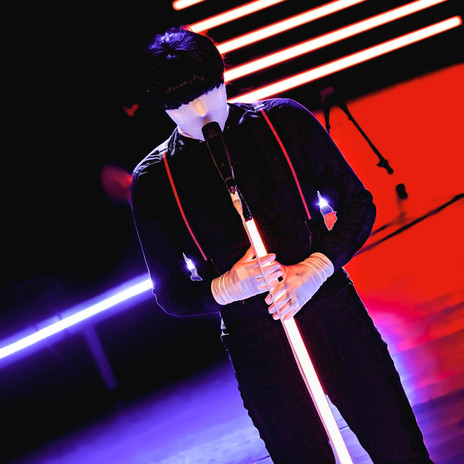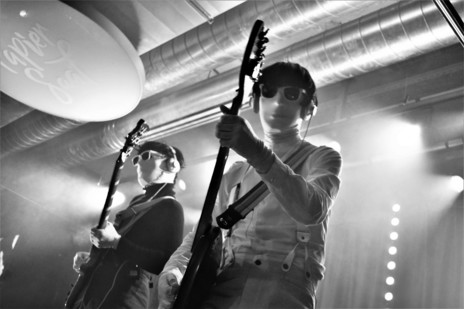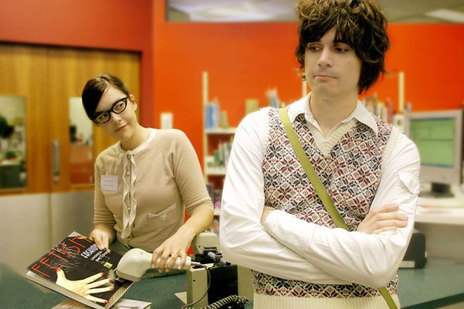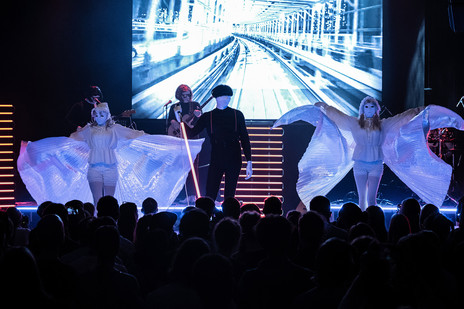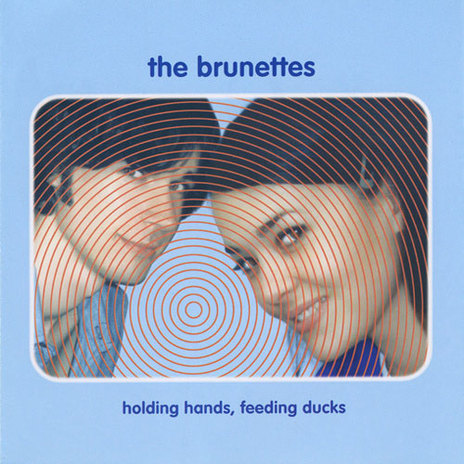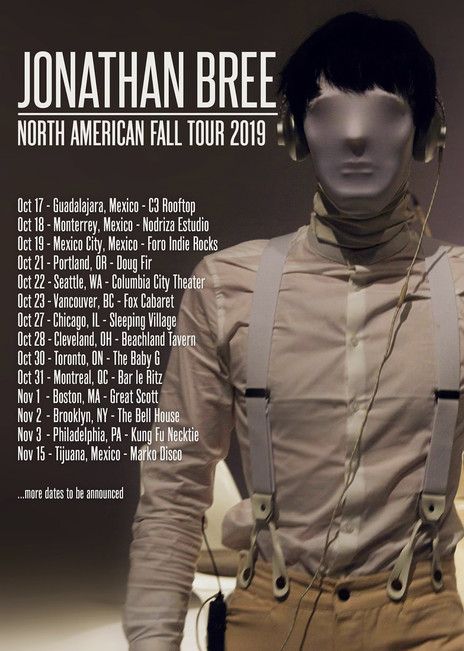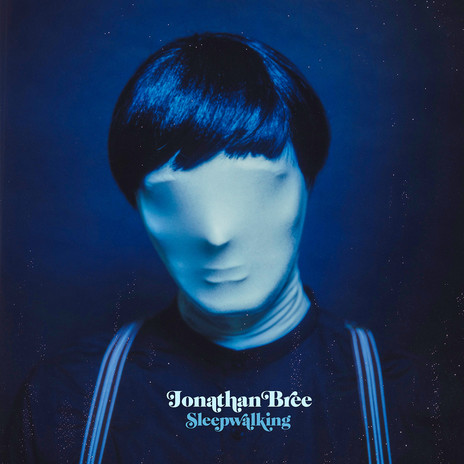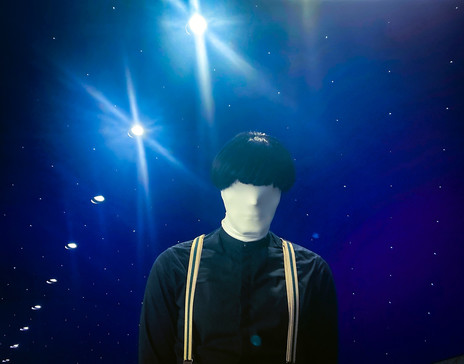On his solo albums and videos since 2015’s A Little Night Music Bree’s face has been covered by a featureless mask, in the manner of Belgian surrealist René Magritte’s paintings The Lovers and The Heart of the Matter from almost a century ago. Yes, four years before the American television show The Masked Singer, singer/songwriter Bree became the masked singer.
With a head full of classic 60s pop, vocal influences from David Bowie, Scott Walker, and the poised languor of European cabaret, Jonathan Bree has built an impressive and diverse catalogue which touches on sexuality, celebrity, ennui, isolation, and disillusionment. And sometimes he’s a romantic, this man behind the veil.
Bree – also a producer, engineer and accomplished collaborator with Heather Mansfield in The Brunettes, Chelsea Nikkel (aka Princess Chelsea) and Britta Phillips of Luna – was “born and grew up in Auckland, and bounced around West Auckland state housing with my mum until I was 13.
“Then I was in Australia for my teenage years,” he says, some of that background covered in Gareth Shute’s AudioCulture profile of The Brunettes.
His musical appreciation – which explains Pre-Code Hollywood edging towards classic 80s synth-pop – came from the family record collection: “My brother and sister are 10 years older and so I helped myself to a number of their LPs once they left home: Blondie, Roxy Music, Duran Duran.”
His musical appreciation came from the family record collection
He credits a key influence and supporter in his pre-teen years. “My cousin Mark Lyons [of the Nudie Suits, in which the pre-teen Bree played bass] was the family member who really helped mentor and inform my early music interest and playing.
“Also, weekend visits to my grandparents were spent exploring the careers and music of others and trying to cover their songs. Each weekend would bring a new artist or genre. From The Beatles, to The Byrds, to Gram Parsons, to Jonathan Richman, David Bowie, and so on.
“It was very informative and would be something I’d look forward to every school week. I wasn’t quick enough to show much promise on the guitar or melodic instruments so was given the drums to play.
“By age 12 my cousin’s family jams evolved to take the shape of a goth band called the Plaster Saints. I guess I was a bit of a novelty being a child drummer playing The Gluepot and other such places in Auckland around 1989-90.”
During his teenage time with his father in Australia he taught himself guitar “by stealing three guitar tab books, The Church’s Starfish, The Cure’s Disintegration, and the Smiths’ Strangeways Here We Come, by far the most challenging.”
Bree was an early bloomer, precocious even. “When I was eight I started watching music TV and wanted to be like the characters on screen. But my cousin’s influence really sparked my fascination and love of music. By the time I was nine I’d already worked out what I wanted to do in life.”
That journey began with The Brunettes when he met Mansfield and over four albums, four EPs and international touring they built a platform and profile, although rewards from sales and concert tickets didn’t always follow.
Neil Finn helped them get a distribution deal with EMI; critical acclaim was high but real-world returns were low.
The Brunettes were on Lil’ Chief Records, the label Bree formed with Scott Mannion. Alongside him were label-mates the Tokey Tones, Nudie Suits, Edmund Cake, Lawrence Arabia, and others.
“It was a really healthy, supportive and competitive environment. I used to joke I was the Roger McGuinn of it all,” he says referring to the guitarist/singer in 60s folk-rock legends The Byrds.
“I was always surrounded by more naturally talented musicians and songwriters that would float through The Brunettes and Lil’ Chief on their way to their own music realisation.”
By 2010 Bree felt The Brunettes had run their course and a solo career beckoned. He told Gary Steel for an AudioCulture article on Lil’ Chief, “As I got into my 30s the naïve ‘young love’ kind of stuff we were doing in The Brunettes started feeling a bit wrong.”
He notes, “After The Brunettes I wanted to make music more for myself and not as focused to work within the styled dynamics of the band. Chelsea convinced me to release the collection of tracks that became my album The Primrose Path. Actually, I really was happy sitting on them and not releasing anything to the public.”
The Primrose Path of 2013 – with Bree looking alarmed on the cover – was a sometimes candidly autobiographical collection which reflects on break-ups (of a relationship, of the band) where loss and wounds are nakedly revealed.
‘The Primrose Path‘ album from 2013 was a sometimes candidly autobiographical collection
On the final song ‘Boxes’ he sings of looking at stacks of unsold Lil’ Chief CDs, an accumulation of apparent failure: albums “that no one wants to buy, stacked in my car”, “love letters from yesterday’s girls”, and the mix-tapes returned which constituted the relationship ... and what might have been ... “Major label backing, but then that’s another song.”
The Primrose Path was a courageously reflective, self-centred album and honest about vulnerability, even if somewhat emotionally manipulative.
Simon Sweetman’s review at his Off the Tracks website concluded, “Album of the year? Well, there are so many options already ... but this has been one of the nicest – best – surprises. And it’ll stay high on the list of best local releases, make that ‘best releases’ of 2013. Brilliant.”
For his part Bree now says, “The years of touring with The Brunettes were a lot of fun, but it’s only since I’ve become a solo artist that I’m more comfortable with myself.”
That confidence was manifest on the follow-up album A Little Night Music (2015) which opened with a 90-second ‘Overture’ of dark cello announcing its mature musical ambition.
“A Little Night Music really started to show his interest in having string parts that slide between notes to cause tension,” says Gareth Shute, Bree’s long-time friend, fellow musician in Lil’ Chief, author and AudioCulture writer.
“That was also the album which had the first video to incorporate the masks, for ‘Weird Hardcore’.”
Again the reviews were favourable.
Two years later Bree’s career hit a sudden upward trajectory. In 2017 the self-directed video of the single ‘You’re So Cool’ – with Bree masked – preceded his 2018 Sleepwalking album. It was named best music video of 2017 by Time Out: New York and, as of 2023, has had 30 million YouTube views and more than 15 million Spotify streams.
As director of photography Benjamin Zambo observed, “‘You’re So Cool’ covers the theme of loving someone who’s struggling with the demise of their career, with hilariously biting lyrics that include, ‘Body so fit, so full of spark. With affirmations as your wall art. You were driven, eyes on the prize. A yoga routine, home exercise’.”
In 2020 Bree discussed the success of the clip with American Songwriter: “Without a doubt it really changed a lot in my world. Suddenly touring my music overseas was not an unrealistic ambition to entertain. I could get a live show together and present it.
“There’s a certain irony because the song is about learning to become comfortable with your invisibility and being made to feel artistically irrelevant by the world around you. I guess the gods decided to have some fun with that.”
The clip – filmed in a school hall – set up Sleepwalking, an album Jane Rocca reviewed in the Sydney Morning Herald: “The self-proclaimed master of misery performs behind masks and leans on pantomime and 1960s nostalgia. This is where lounge and mod cultures hook up in a dance hall and bond over melancholic orchestral strings. Part theatre, part dreary pop, it is Bree’s cinematic approach that is most alluring.”
Bree told Rocca, “My songs are personal and always refer to either myself, friends going through things in relationships, and sometimes they serve as a premonition of what’s to happen in my world of relationships.”
The album features a duet with Catalan singer Clara Vinals on ‘Say You Love Me Too’ (she would appear on Scott Mannion’s 2019 solo album Loving Echoes) and two with Princess Chelsea, along the Nancy Sinatra and Lee Hazlewood/Serge Gainsbourg and Jane Birkin axis.
The video for Bree’s ‘You’re So Cool’ was named best music video of 2017 by ‘Time Out: New York’
The crafted collection also features, among others, Andrew Keoghan (violin), Hollie Fullbrook (Tiny Ruins), Berlin-based soprano Ella Smith and, on cello, viola and violin, Jessica Hindin.
Gareth Shute sees a clear and developing musical thread through Bree’s career from The Brunettes to Sleepwalking. “The Paper Dolls EP by The Brunettes showed him toying with electronic beats on ‘Bedroom Disco’ and ‘Magic (No Bunny)’, and The Primrose Path was him extending this fluency with digital to create something a bit more organic, but quite internal.
“Sleepwalking showed the full range of his sound from the viral hit ‘You’re So Cool’ to more upbeat – but still a tad dark – tracks like ‘Say You Love Me Too’, ‘Valentine’ and ‘Roller Disco’.”
At the time Bree told New Zealand Musician, “I think Sleepwalking retains a lot of orchestral elements and techniques learnt from Night Music, though in general, it’s probably more pop-minded and not as subdued.”
In a review for New Zealand Herald Karl Puschmann said, “The bright and cartoony bubblegum pop of his early work in The Brunettes is now well and truly popped … many of the songs on this ominous collection of 60s pop are dark and restless. They exist in an unnerving state of unease.
“However, the songs, while adorned in strangeness, are really quite beautiful.”
Hugh Collins at Stuff said, “Much like its title, Sleepwalking is a spacious and nocturnal record that constantly portrays a strange kind of peace, but not in a way that’s completely laid back.”
By this time the mask was Bree’s visual signifier. As a child he had a Planet of the Apes mask which he loved and in the Lil’ Chief band Disciples of Macca (a Wings cover band) they would wear Paul and Linda McCartney masks.
“I have limited vision, I find I don’t get as distracted by things. And my resting face isn’t the best face,” he jocularly told the Sydney Morning Herald. “I was painfully aware of people looking at me when I was in The Brunettes.”
During these years Bree was constantly touring internationally – sometimes sharing a band and the stage with Princess Chelsea – and picking up favourable reviews in British and American press. He was briefly based in New York – where he met, among others, Dean Wareham and Britta Phillips of Luna – and, as other experiences and musical influences filtered through, his sound became more akin to baroque pop and his delivery deeper and darker.
as experiences and musical influences filtered through, his delivery became deeper and darker
In 2020 Bree said of his vocal style, “I like using my voice in different ways in different registers. Maybe it is most naturally suited or appreciated in the baritone range, though.
“My friend Dean [Wareham] once told me, ‘If you’re not sure how to sing it then deliver it relaxed.’ I think it was solid advice.”
After the Curtains Close (2020) showed him at another peak where strings and his baritone vocals acted as fascinating counterpoints. He stepped back to let Princess Chelsea be the prominent vocalist on ‘Kiss My Lips’ and Britta Phillips sings ‘Meadows in Bloom’.
At Allmusic.com Tim Sendra encapsulated what many have concluded about Bree’s musical persona and attributes: “Jonathan Bree has quietly put together a string of albums that are as inventive, emotionally complex, and sonically pleasing as anything done by anyone treading the same orchestral pop-meets-indie singer/songwriter boards that he does.
“After the Curtains Close follows in the footsteps of his previous work as it combines heavy strings, deeply melancholy lyrics, melodies that sound familiar and strange at once, and through it all, Bree’s knack for delivering a subtle punch of a hook …
“It’s another near-brilliant exercise in restraint and underplayed feeling that cuts just as deep as music made by those who shout their pain from the rooftops.”
With each new album Bree was reaching into more ambitious music and arrangements. However, Pre-Code Hollywood (2023) reverted to formative influences from the synth-pop years.
Shute: “I see a clear line from the earlier albums. The wry take on things remains. However, he was a drummer from a young age so rhythm comes through more on this, even if it’s through an 80s pop lens.”
If there are frissons of New Order, Ultravox, and David Bowie’s Let’s Dance, they are manipulated into Bree’s own style, although attention naturally fell on Nile Rodgers – who co-produced Let’s Dance with Bowie – playing guitar on two tracks. Rodgers is credited as co-writer/co-producer with Bree on the funk of the title track.
Bree had contacted Rodgers by email: “The idea came to me to reach out some time in 2020, and to send him some demos as I’ve always been a huge fan of his work.”
Connections were made, Rodgers provided his contributions and although they didn’t meet in person they came close. “I had a really special day where the band and myself were invited to Abbey Road [where the album was mastered] which in itself was quite magical. We were in the building at the same time [as Rodgers], but didn’t get to meet in person unfortunately.”
The cachet of Rodger’s contribution however has translated into an even higher profile for Pre-Code Hollywood and current touring. The Chic star invariably gets name-checked in the album’s reviews.
Asked if, on reflection, he sees any obvious progression across his solo albums, Bree is cautious. “Thematically there’s a slight arc that follows my personal life, I suppose. A Little Night Music was me really exploring extended chords and classical elements; more recently I’ve been more inspired by exploring the pop productions of my childhood.
“I don’t reflect on it much, and there are always tracks within albums that buck any potential overarching theme.”
And the 20-plus years of his musical journey – like the road – stretches out before him.
“But home is still Auckland. After a show the band listens, and laughs, along to bardcore music,” he says referring to a genre where contemporary songs are reworked in a medieval style, a kind of Middle Ages folk-rock.
“I had no idea what it was but according to some I’m the bardcore version of my own music,” laughs the man behind the mask.
